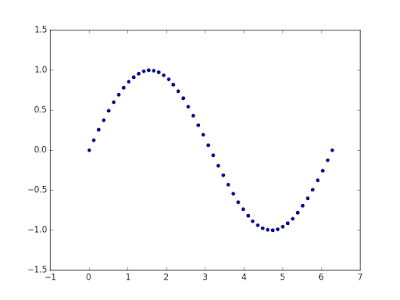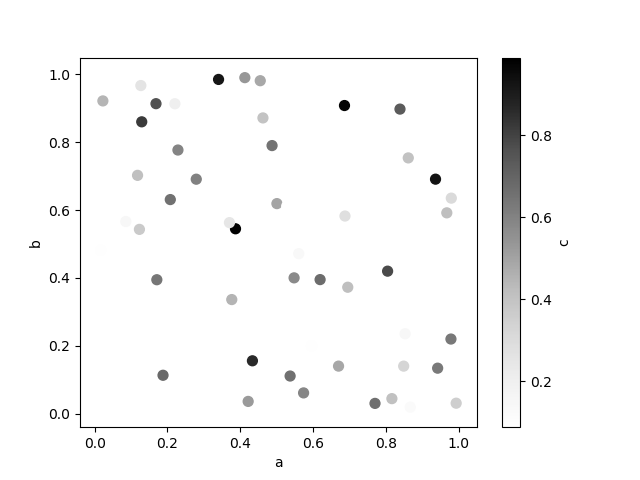

The above code means that we are setting the color of the scatter plot as red. To set the colors of a scatter plot, we need to set the argument color or simply c to the pyplot.scatter() function.įor example, take a look at the code below: plt.scatter(x, y, color = 'red') plotnonfinite : boolean, optional, default: False. For non-filled markers, the edgecolors kwarg is ignored and forced to 'face' internally. Setting colors to the multiple scatter plot Defaults to None, in which case it takes the value of rcParams 'scatter.edgecolors' 'face'. A 2D array in which the rows are RGB or RGBA. Here, we set the color of all the markers in the scatterplots to red by setting c'red' in the scatter () method. By default, pyplot returned orange and blue. Possible values: A scalar or sequence of n numbers to be mapped to colors using cmap and norm. Note: Notice that the two plots in the figure above gave two different colors. seed (19680801) def randrange (n, vmin, vmax): ''' Helper function to make an array of random numbers having shape (n, ) with each number distributed Uniform(vmin, vmax. If None, defaults to ‘face’ If ‘face’, the edge color will always be the same as the. edgecolors : color or sequence of color, optional, default: None. In the official documentation you can find an additional parameter, edgecolors, which allows setting the edge color.


import matplotlib.pyplot as plt import numpy as np Fixing random state for reproducibility np. When you use scatter plot, you set a color for both face and edge. For more information on colors in matplotlib see. Demonstration of a basic scatterplot in 3D. This plots a list of the named colors supported in matplotlib.
#Color in pyplot scatter full
I tried creating a list of the same length as the data with the color I want to assign to. Go to the end to download the full example code. import matplotlib.pyplot as plt import numpy as np Fixing random state for reproducibility np.ed(19680801) N 50 x np.random.rand(N) y np.random.rand(N) colors np.random.rand(N) area (30 np.random.rand(N))2 0 to 15 point radii plt.scatter(x, y, sarea, c. I want to make a scatter plot of them giving each point a different color depending on these conditions: -BLACK if x i<10. This example showcases a simple scatter plot. Line 16: The pyplot.show() function is used, which tells pyplot to display both the scatter plots. I have two numpy arrays, x and y, with 7000 elements each. pyplot.scatter(x,y2) is used to create a scatter plot of x and y2. A colormap is like a list of colors, where each color has a value that ranges from 0 to 100. Lines 12 to 13: The array y2 is created, which contains the y-coordinates for the second scatter plot. The Matplotlib module has a number of available colormaps. pyplot.scatter(x,y1) is used to create a scatter plot of x and y1. Lines 8 to 9: The array y1 is created, which contains the y-coordinates for the first scatter plot. Line 5: The array x is created, containing the x-coordinates common to both plots. Line 2: The numpy module is imported, which will be used to create arrays. In Matplotlib’s scatter() function, we can color the data points by a variable using “c” argument.Line 1: In matplotlib, the pyplot module is imported, which will be used to create plots. Scatter Plot with Matplotlib Add Colors to Scatterplot by a Variable in Matplotlib We also add x and y-axis labels to the scatter plot made with Matplotlib. Below, we make scatter plot by specifying x and y-axes variables from the Pandas dataframe. One of the ways to make a scatter plot using Matplotlib is to use scatter() function in Matplotlib.pyplot. Df = pd.read_csv(penguins_data, sep="\t")


 0 kommentar(er)
0 kommentar(er)
